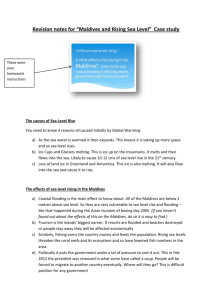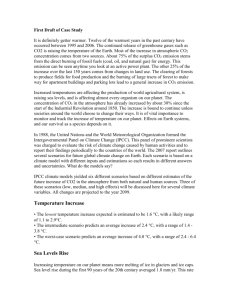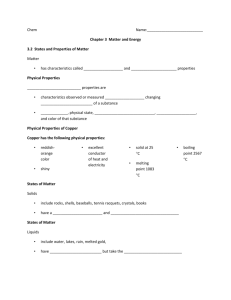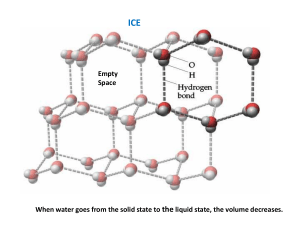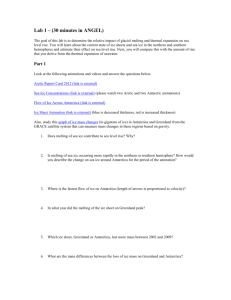TCM Ice Sheet Melting and Sea Level Rise
advertisement
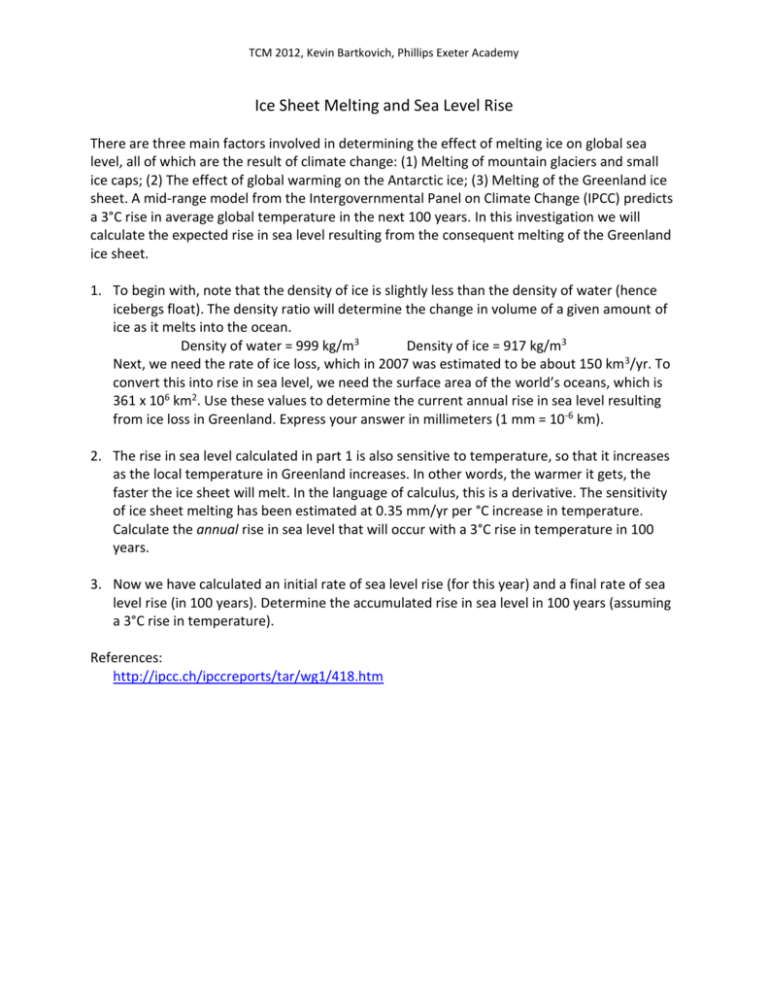
TCM 2012, Kevin Bartkovich, Phillips Exeter Academy Ice Sheet Melting and Sea Level Rise There are three main factors involved in determining the effect of melting ice on global sea level, all of which are the result of climate change: (1) Melting of mountain glaciers and small ice caps; (2) The effect of global warming on the Antarctic ice; (3) Melting of the Greenland ice sheet. A mid-range model from the Intergovernmental Panel on Climate Change (IPCC) predicts a 3°C rise in average global temperature in the next 100 years. In this investigation we will calculate the expected rise in sea level resulting from the consequent melting of the Greenland ice sheet. 1. To begin with, note that the density of ice is slightly less than the density of water (hence icebergs float). The density ratio will determine the change in volume of a given amount of ice as it melts into the ocean. Density of water = 999 kg/m3 Density of ice = 917 kg/m3 Next, we need the rate of ice loss, which in 2007 was estimated to be about 150 km 3/yr. To convert this into rise in sea level, we need the surface area of the world’s oceans, which is 361 x 106 km2. Use these values to determine the current annual rise in sea level resulting from ice loss in Greenland. Express your answer in millimeters (1 mm = 10-6 km). 2. The rise in sea level calculated in part 1 is also sensitive to temperature, so that it increases as the local temperature in Greenland increases. In other words, the warmer it gets, the faster the ice sheet will melt. In the language of calculus, this is a derivative. The sensitivity of ice sheet melting has been estimated at 0.35 mm/yr per °C increase in temperature. Calculate the annual rise in sea level that will occur with a 3°C rise in temperature in 100 years. 3. Now we have calculated an initial rate of sea level rise (for this year) and a final rate of sea level rise (in 100 years). Determine the accumulated rise in sea level in 100 years (assuming a 3°C rise in temperature). References: http://ipcc.ch/ipccreports/tar/wg1/418.htm

